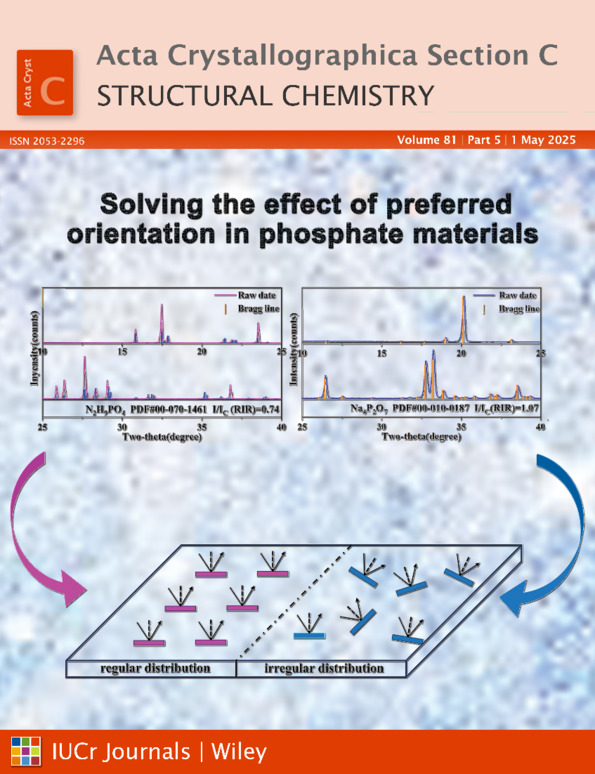Crystal structures of two pyrrolidin-1-yl derivatives of cathinone: α-PVP and α-D2PV
Abstract
Two cathinones found on the market for legal highs have been characterized using X-ray crystallography. These are 1-(1-oxo-1-phenylpentan-2-yl)pyrrolidin-1-ium chloride monohydrate, C15H22NO+·Cl−·H2O (α-PVP·HCl·H2O), with erythritol [(2R,3S)-butane-1,2,3,4-tetrol, C4H10O4] as diluent in the sample, and 1-(2-oxo-1,2-diphenylethyl)pyrrolidin-1-ium chloride, C18H18NO+·Cl− (α-D2PV·HCl or A-D2PV·HCl). The intermolecular interactions occurring in the various crystal structures of these compounds have been described. The two arene rings of α-D2PV participate in the formation of π–π bonds (with parallel-displaced geometries of the π–π interactions). In addition, one of the rings forms a C—H…π interaction with an arene ring participating in an adjacent π–π bond, resulting in a linear arrangement of the molecules in the crystal. In the hydrated α-PVP salt, the molecules form a structure, the so-called `corral', in which two water molecules and two chloride ions are confined. The whole is held together by intermolecular hydrogen bonds. The structure of the chloride salt of α-D2PV described here lacks water molecules, which automatically allows for the formation of other types of intermolecular interactions. This structure was compared with the previously published hydrated form.




